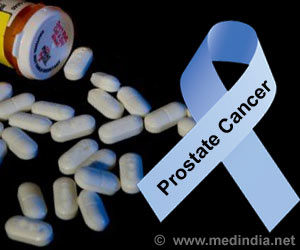A pro-growth signaling pathway common to many cancers that, when blocked, kills cancer cells but leaves healthy cells comparatively unharmed.

‘Proteins known to be in the cancer signal transmission cascade are present on endosomes inside the cell, supporting the idea that the key growth message is being signaled from these internal compartments.’





Two years ago, research out of UW-Madison Professor Richard
Anderson’s lab found that some of these agonist-stimulated
receptors continue to transmit the signal even after they have
been pulled into the cell, sequestered in vesicles called
endosomes and presumably on their way to being degraded. “According to dogma in the literature, receptors shouldn’t make PIP3 at these internal sites, but they were,” Anderson says. “We set out to ask, ‘Why is that?’”
In this new study, a postdoctoral fellow in Anderson’s lab, Suyong Choi, showed that the proteins known to be in this signal transmission cascade were all present on endosomes inside the cell, supporting the idea that the key growth message was being signaled from these internal compartments.
However, there was one fact which they could not biologically explain: In a typical signaling cascade, each step amplifies the signal, suggesting there should be more and more of the messenger molecules; but here, levels of PIP3 and other intermediary messengers were too low to be detected in endosomes.
“A scaffold completely solves this issue, because it acts like an assembly line, bringing together all of the proteins and passing one messenger molecule to the next protein in the cascade until the last protein, PI3K, is activated and generates PIP3,” Anderson says. “Suyong Choi found that the scaffolding protein IQGAP1 brings all of these proteins together like a happy family on the endosome. It’s an incredibly efficient mechanism.”
Advertisement
“It worked beautifully to block assembly of IQGAP1 and PI3K complex,” Anderson says. “The really cool thing was, when we treated different cells with these inhibitory fragments, the disruption of IQGAP1 and PI3K complex formation had almost no effect on normal cells but it killed cancer cells very efficiently.”
Advertisement
“Pharmaceutical companies have developed PI3K inhibitors, but many of these have failed, likely because they’re hitting all PI3Ks and the different pathways,” Anderson said. “If you can specifically disrupt this agonist-activated PI3K pathway, the one that has a specific role in cancer, then you can effectively treat cancers. We think that’s what this study is showing.”
The researchers further showed that this same scaffolding was used to transmit insulin signaling, suggesting the pathway may play a role in the onset of diabetes and cardiovascular diseases as well as cancers.
Source-Newswise














